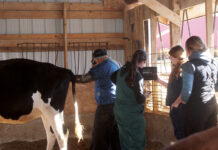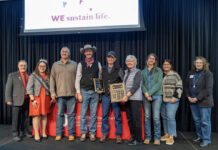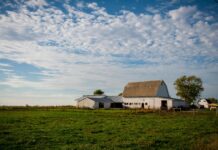SALEM, Ohio — Imagine purchasing a bale of hay, knowing where it came from, when it was baled and exactly what the moisture level was when it was baled.
Believe it or not, the technology is available.
Hay systems
The original HayBoss is for the small square and round balers only.
The AGCO HayBoss G2 system, or the G2 Tagger, is used on the large square balers. The system places a radio frequency identification tag on each bale as it is being made, capturing and storing the information essential to identifying the bale of hay.
In addition, every bale of hay is equipped with a serial number so that no matter where in the country the bale ends up, the end user can find out what they need to know about it.
End user
However, the end user must also have a bale tag scanner system to be able to read the information contained in the tags on the bale of hay. They come in a hand-held model and a loader-mounted unit.
The information from scanning the tags can also be saved and copied to a removable USB memory device that can be downloaded into a computer to later print out or to use for record keeping.
Costs
The Hayboss system does come with a price tag. The HayBoss G2 Hay Preservative Application System costs about $6,700. The HayBoss G2 Tagging System runs around $6,000 and the handheld scanner to read the tags is about $2,000.
One roll of RFID tags (850 tags on a roll) costs $532 or about 63 cents per tag. The total cost for this complete setup will be in the ballpark of $15,300.
If buying the AGCO Hay Preservative, the 200-gallon size has a list price of about $2,600.
System user
Many attempts were made to find a producer using the system in the Farm and Dairy circulation area, but we were unsuccessful.
However, a grower in LaSalle, Colo., just north of Denver, does use the system.
Meet Frank Jones, a farmer who produces 16,000 large square bales (3-by-4-by-8 foot bales) a year through his own production and custom work. In addition, Jones also raises 60 head of beef cattle on his cow-calf operation.
Jones specializes in an alfalfa grass mix hay variety. He also produces grass hay, sorghum bales, wheat hay and any other type that crosses his path.
“We won’t own a baler without it,” Jones said of the AGCO system.
He has been using the system since it became available and has it installed on both of his baling units. In fact, Jones is on his third set of the instruments. He added they do last the lifetime of the baler.
“It’s easy, you just turn it on and use it,” Jones said.
Jones produces 1,800 acres of hay with as many as four cuttings a year, but three is the average. He added his baler covers 7,000 acres a year between the custom work and his own farm.
Consumer benefits
Jones said it doesn’t just have benefits for his operation, but benefits the end consumer as well.
It allows a hay producer to produce a leafier hay by enabling many to bale at times they would not necessarily do it. Jones said it opens up windows for baling time times by enabling balers to get into the fields without waiting for hay to completely dry.
The system allows precision application of a preservative on the hay.
It also works for hay producers in some parts of the country that must bale at night because the conditions are too dry. Preservative can also be applied in this case and stops the hay leaves from flaking away, meaning more product getting to the farm.
The system also allows the producer and end user to selectively stack hay. They can separate the types of hay into the categories that are useful for them.
“The system helps to build confidence that the farmer can stack the hay the way he needs to for his operation. It takes a lot of the guess work out of it because the tag will tell you everything you need to know,” Jones said.
He added the information contained also tells the end user the potential feed value in the dry matter by telling him what it is compromised of, making it a tool for many dairy farms because of their constant need for quality hay.
When questioned about the additional cost to the end user, Jones said many of his customers think of it as an insurance policy.
“In all reality, the cost is a fairly cheap insurance policy. You know from the moisture levels, that nothing will spoil or can catch fire. The hay is in the best condition possible,” Jones said.
Hayboss G2 System
Bale serial number
Name of field where bale was created
Date and time bale was formed
High and average moisture levels from field
Amount of preservative applied
Bale weight
(Source: Agco Parts)











Having had to purchase hay for our horses many years ago, I got stuck with wet hay which a local farmer tried to palm off on our family. We were away in Wisconsin at the time and the hay sat out in the weather for a few days until we returned. It had been rained on to begin with and the additional time it was left standing did not help. We refused to pay for it and went to court on the matter which was resolved in our favor.
A great step, in my opinion, to avoid problems with hay.